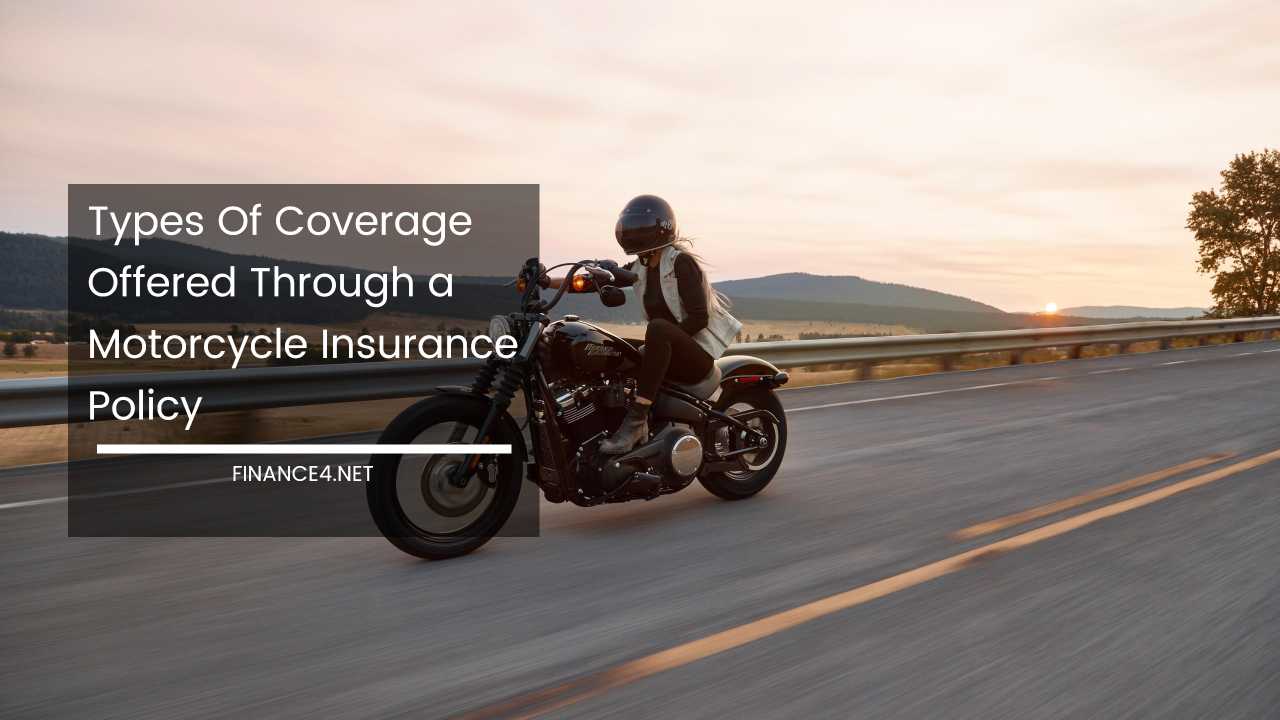Motorcycle Insurance Explained: Coverage You Need to Ride Safe

Unleashing the Power of Choice: A Comprehensive Guide to Motorcycle Insurance Coverage
Cruising down the open road on a motorcycle is an exhilarating experience, offering a sense of freedom and connection to the environment unmatched by other vehicles.
However, unlike your car, a motorcycle’s vulnerability demands a separate insurance policy tailored to its unique risks.
This comprehensive guide empowers you to navigate the world of motorcycle insurance coverage, ensuring you’re financially protected in case of unforeseen events.
A Spectrum of Motorcycles: Understanding Coverage Eligibility
The good news is that most insurance companies offer coverage for a diverse range of motorcycles, catering to various riding styles and preferences. Here’s a closer look at some common motorcycle types that fall under the insurance umbrella:
- Thrilling Speedsters: Sports Bikes – These lightweight machines prioritize agility and acceleration, built for carving corners and exhilarating performance. Their high-performance nature often translates to higher insurance premiums compared to other motorcycle types.
- Comfort Cruisers: Known for their relaxed riding position and powerful engines, cruisers are ideal for long-distance touring. Their heavier weight and more relaxed design might lead to slightly lower insurance costs compared to sports bikes.
- Enhanced Stability: Trike Conversions – These three-wheeled motorcycles offer added stability and storage capacity compared to traditional two-wheelers. While offering a comfortable riding experience, trikes might fall under a different insurance category due to their unique configuration. It’s crucial to confirm coverage details with your chosen provider.
- Geared for Adventure: Touring Bikes – Designed for conquering long distances with comfort in mind, touring bikes often come equipped with windshields, luggage compartments, and comfortable seating. Their features and potential higher value compared to standard motorcycles may influence insurance costs.
- Timeless Treasures: Classic Bikes – Vintage motorcycles hold a special place for enthusiasts and collectors. Their irreplaceable value and potential restoration costs might necessitate specialized insurance options with agreed-upon valuations.
- One-of-a-Kind Creations: Custom Cycles – Motorcycles that have undergone significant modifications from their original design may require specific insurance considerations. Unique parts and performance upgrades can influence the value and risk profile, impacting insurance costs.
Remember: Always check with your chosen insurance provider to confirm coverage eligibility and any specific requirements for your particular motorcycle type and modifications.
Unveiling the Layers of Protection: Exploring Motorcycle Insurance Coverage Options
A well-structured motorcycle insurance policy offers a multi-layered shield against financial losses arising from accidents, theft, and other unforeseen circumstances. Here’s an in-depth exploration of the six most common coverage options:
- Collision Coverage: The Guardian Against Collisions
This cornerstone coverage protects your motorcycle in the event of a collision with another vehicle, object, or even a single-vehicle accident (e.g., losing control on a curve). Regardless of who’s at fault, collision coverage pays for repairs or replaces your motorcycle (minus your deductible) if it’s deemed repairable or totaled in the accident.
Understanding the concept of book value (market value) and actual cash value (depreciated value) is crucial when considering collision coverage. The policy will typically reimburse you for one of these values, minus your deductible.
- Comprehensive Coverage: Defending Against the Unexpected
While Collision Coverage tackles collisions, Comprehensive Coverage offers a broader safety net for situations beyond accidents.
This coverage extends financial protection for damages caused by theft, vandalism, fire, weather events (hail, floods), falling objects, and animal collisions. Similar to Collision Coverage, Comprehensive coverage reimburses you for the book value of your motorcycle, minus your deductible.
- Property Damage and Bodily Injury Liability: Protecting Others
This crucial coverage safeguards others on the road when you’re legally responsible for an accident. It pays for repairs to the other party’s vehicle or medical expenses for injured individuals.
Understanding your liability coverage limits is essential. These limits are typically denoted in a format like “$25,000/$50,000/$25,000” (per person/per accident/property damage).
Consider increasing these limits if you have significant assets to protect. Don’t forget to ensure your policy includes Guest Passenger Liability, which provides coverage for injuries sustained by passengers on your motorcycle.
- Medical Coverage (MedPay): Healing After an Accident
This coverage acts as a financial safety net for medical expenses you incur, the insured rider, in the event of an accident, regardless of fault. Medical bills from ambulance transportation, emergency room visits, doctor consultations, and rehabilitation costs can be significant.
MedPay coverage typically has a limited payout amount and may have a time limit (e.g., 3 years) for filing claims after the accident.
- Uninsured/Underinsured Motorist Coverage (UM/UIM): A Shield Against Unprepared Drivers
Imagine a scenario where you’re involved in an accident caused by another driver who either has no insurance (uninsured) or doesn’t have enough insurance (underinsured) to cover your medical bills, lost wages, and motorcycle repairs.
This is where Uninsured/Underinsured Motorist Coverage (UM/UIM) steps in as your financial champion. UM/UIM coverage helps compensate for medical expenses, lost wages due to injury, and even pain and suffering resulting from the accident caused by an uninsured or underinsured motorist.
There are typically two types of UM/UIM coverage:
- Bodily Injury UM/UIM: This coverage helps cover your medical expenses and lost wages if you’re injured by an uninsured or underinsured driver.
- Property Damage UM/UIM: This coverage reimburses you for repairs to your motorcycle if it’s damaged by an uninsured or underinsured driver, up to the policy limits.
Remember: UM/UIM coverage limits are typically separate from your Bodily Injury and Property Damage Liability limits. Consider the level of protection you need and discuss options with your insurance provider.
- Roadside Assistance: A Helping Hand on the Road
Not all motorcycle journeys are smooth sailing. A flat tire, dead battery, or minor mechanical issue can leave you stranded on the side of the road. Roadside assistance, although typically an optional coverage, can be a lifesaver in such situations. This coverage provides valuable services like:
- Towing: Getting your motorcycle towed to the nearest qualified repair shop in case of a breakdown.
- Battery Jump-Start: Receiving assistance if your motorcycle battery dies and you need a jump-start to get going again.
- Flat Tire Service: Help with changing a flat tire or arranging for a replacement.
- Fuel Delivery: Assistance if you run out of gas and need a refill to get back on the road.
- Lockout Service: Help if you get locked out of your motorcycle compartment.
The specific roadside assistance services offered may vary depending on your insurance provider and policy.
Additional Considerations for a Secure Ride
- Seasonal Coverage: If you live in an area with harsh winters or don’t plan to ride your motorcycle year-round, some insurers offer seasonal policies. These policies provide coverage for specific periods (typically 6-9 months) when you’ll be using your motorcycle. This can be a cost-effective option if you don’t need year-round coverage.
- Customizing Your Coverage: Insurance companies allow you to tailor your motorcycle insurance policy to fit your specific needs and budget. You can adjust your deductible amounts (the portion you pay out-of-pocket before insurance kicks in) and coverage limits to find the right balance between affordability and protection. Consider factors like the value of your motorcycle, your riding habits, and your risk tolerance when making these decisions.
- Safety Discounts: Many insurance companies offer discounts for completing motorcycle safety courses, having anti-theft devices installed on your motorcycle, and maintaining a clean driving record.
- Bundling Your Insurance: If you also have car insurance with the same company, bundling your motorcycle insurance can often lead to significant savings.
By understanding the different types of motorcycle insurance coverage and making informed choices, you can ensure you’re cruising the open road with peace of mind, knowing you’re financially protected in case of the unexpected.
Remember, the journey of motorcycle ownership goes beyond the thrill of the ride – it’s about responsible preparation and safeguarding your investment.
So, choose your coverage wisely, and get ready to experience the freedom of the open road with confidence!



